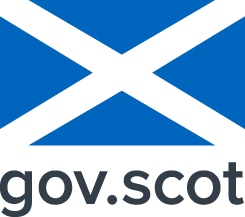Scotland Habitat and Land Cover Map - 2020
Habitat and land cover maps created using AI to classify satellite data to EUNIS level 2 by Space Intelligence in partnership with NatureScot. This work was a response to the Can Do Innovation fund challenge AI for Good -How can we use Artificial Intelligence (AI) techniques to tackle the climate emergency? This dataset contains the EUNIS classification level 2 of Scotland's land cover for the year 2020. It is part of a series of 3 layers (raster datasetsat~20m resolution). The other layer provides the land cover classificationfor the year 2019 and a third layer provides the land cover changes that occured between 2019 and 2020.
Default
Identification info
- Metadata Language
- English
- Character set
- UTF8
- Dataset Reference Date (Publication)
- 2021-06-04
- Dataset Reference Date (Revision)
- 2021-06-04
- Identifier
- HLCM2020
- Purpose
-
Habitat and land cover maps created using AI to classify satellite data to EUNIS level 2.
- Credit
-
Maps and data created by Space Intelligence with input and support from NatureScot, © SNH
- Maintenance and update frequency
- Not planned
-
GEMET - INSPIRE themes
-
-
Habitats and biotopes
-
- Limitations on Public Access
- Other restrictions
- Other constraints
-
Maps and data created by Space Intelligence with input and support from NatureScot , © SNH
- Use constraints
- Other restrictions
- Other constraints
-
Available under the Open Government Licence http://www.nationalarchives.gov.uk/doc/open-government-licence/version/3/
- Spatial representation type
- Grid
- Topic category
-
- Environment
- Environment description
-
Microsoft Windows 7 Version 6.1 (Build 7601) Service Pack 1; Esri ArcGIS 10.7.1.11595
))
Temporal reference
Temporal extent
Temporal extent
- Reference system identifier
- EPSG / 27700 / 8.9.5(3.0.1)
Distribution Information
Data format
- Data format
-
Name Version GeoTIFF
-
Transfer options
- Resource Locator
-
Protocol Resource Locator Name WWW:DOWNLOAD-1.0-http--download
https://gis-downloads.nature.scot/HLCM-2020_SCOTLAND_TIFF_27700.zip GeoTIFF (EPSG:27700)
WWW:DOWNLOAD-1.0-http--download
https://gis-downloads.nature.scot/HLCM-2019_SCOTLAND_TIFF_27700.zip GeoTIFF (EPSG:27700)
WWW:DOWNLOAD-1.0-http--download
https://gis-downloads.nature.scot/HLCM-CHANGE-2019-2020_SCOTLAND_TIFF_27700.zip GeoTIFF (EPSG:27700)
OGC:WMS-1.3.0-http-get-capabilities
https://ogc.nature.scot/geoserver/habitatsandspecies/wms?request=GetCapabilities&service=WMS HLCM_2019
OGC:WMS-1.3.0-http-get-capabilities
https://ogc.nature.scot/geoserver/habitatsandspecies/wms?request=GetCapabilities&service=WMS HLCM_2019_2020_CHANGE
OGC:WMS-1.3.0-http-get-capabilities
https://ogc.nature.scot/geoserver/habitatsandspecies/wms?request=GetCapabilities&service=WMS HLCM_2020
Data quality info
- Quality Scope
- Dataset
- Conformity
- Commission Regulation (EU) No 1089/2010 of 23 November 2010 implementing Directive 2007/2/EC of the European Parliament and of the Council as regards interoperability of spatial data sets and services
- Explanation
-
Data Set Not Assessed
- Degree
- false
- Conformity
- User’s Accuracy
- Explanation
-
The overall accuracy of the maps against our input data was high (95.8%). The User’s Accuracy, a measure of how likely a pixel of a particular class in the map is to actually be that class, ranged from 86.4% for class H3 (inland cliffs), to 99.9% (screes), with most classes well over 90% accuracy.
Commonly confused classes using remote sensing data, such as the four woodland classes (Deciduous, Coniferous, ‘Mixed’ and Small’ (patches and lines of disturbed woodland) were all classified with ~95% accuracy or higher. This suggests the classifier would be able, if repeated annually, to reliably detect changes between these classes, which is critical for the determination of the NCAI.
- Degree
- true
- Statement
-
20 m resolution geotifs derived from
Ground Data
The ground data were collected through using a combination of the following sources, using a broad search that stretched beyond our Areas of Interest:
● Habitat Map of Scotland (ground polygons)1
● 2018 National Forest Inventory2
● Ordnance Survey3
● Global Forest Change v1.64
● High resolution imagery5
In all cases the ground data were not used naively: we used a careful combination of at least two data sources to create each polygon, and checking against recent high resolution imagery to ensure each polygon was ‘pure’ (i.e. included only one class) and up to date (for
example, if it was a forest polygon, the trees had not been cleared since the data were collected).
Satellite remote sensing datasets used for mapping
Optical Sentinel 2 (S2) (30/03/2019-10/11/2019)
Radar Sentinel-1, descending and ascending (01/01/2019-31/12/2019)
ALOS-PALSAR 2, 2018 annual composite
Topography Shuttle Radar Topography Mission (SRTM, 2000)
Process
Extensive training datasets, and derived features from remote sensing data, to implement a complex set of tuned machine learning algorithms to produce a Prediction Model, and ultimately a prediction of a class for each pixel. Through the project duration the sophistication of the models used increased, increasing accuracy and efficiency. For commercial reasons the details of the final algorithms used will not be revealed here.
Metadata
- File identifier
- 88cea3bd-8679-48d8-8ffb-7d2f1182c175 XML
- Metadata Language
- English
- Character set
- UTF8
- Resource type
- Dataset
- Hierarchy level name
-
dataset
- Metadata Date
- 2025-01-28T12:04:50.352Z
- Metadata standard name
- UK GEMINI
- Metadata standard version
-
2.3
Point of contact
- Individual name
-
Geographic Information Group
- Organisation name
-
NatureScot
- Position name
-
Data Supply
- Voice
-
01463 725076
- Delivery point
-
Great Glen House
- City
-
Inverness
- Administrative area
-
Highland
- Postal code
-
IV3 8NW
- Country
- GB
- Electronic mail address
-
data_supply@nature.scot supply@nature.sco data_supply@nature.scot
- Role
- Point of contact
 SpatialData.gov.scot
SpatialData.gov.scot